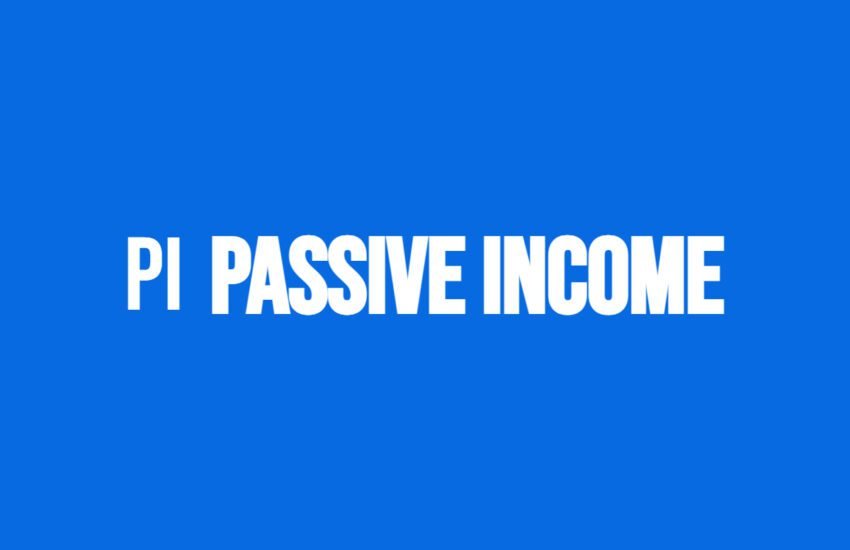Signs You’ve Chosen the Wrong Niche and Need to Shift to Another
Choosing a niche for your online business is a crucial decision that can greatly impact your success. It’s not uncommon to find yourself questioning whether you’ve made the right choice.
If you’re unsure whether you’ve chosen the wrong niche, there are a few signs to look out for. Additionally, knowing when it’s best to shift to another niche can save you time and effort.
- How to Recognize that you are in the wrong Niche
- When to Shift to Another Niche
- Conclusion
- Frequently Asked Questions
- 1. What are some signs that suggest you’ve chosen the wrong niche for your blog?
- 2. How can you assess whether your niche is the right fit for you?
- 3. What are the consequences of persisting in the wrong niche?
- 4. How can you identify if your niche is too broad or too narrow?
- 5. How can you gauge audience interest and engagement in your niche?
- 6. How can you pivot to a new niche effectively?
- 7. What are some indicators that suggest a niche may be too competitive for a beginner blogger?
- 8. How can you validate a new niche idea before fully committing to it?
- 9. What role does profitability play in choosing a niche for your blog?
- 10. How can you effectively transition your existing audience to a new niche?
How to Recognize that you are in the wrong Niche
In this article, we’ll explore how to recognize if you’ve chosen the wrong niche and when it might be time to make a change.
1. Lack of Interest or Passion
One clear indication that you’ve chosen the wrong niche is when you lose interest or passion for the topic. Building a successful online business requires dedication and enthusiasm.
If you find yourself struggling to stay motivated or feeling disinterested in your niche, it may be a sign that it’s time to explore other options.
2. Limited Market Demand
Another red flag is when there is limited market demand for your chosen niche. To determine this, it’s important to conduct thorough research.
Utilize tools like Google Trends, the free trial of Semrush, and SERPs to analyze the keyword and phrase data related to your niche.
By saving this information in a spreadsheet, you can easily compare the potential market demand with other niches you may be considering.
3. High Competition
On the flip side, excessive competition can also indicate that you’ve chosen the wrong niche.
If there are already numerous established players dominating the market, it can be challenging to carve out your own space.
Assess the level of competition in your niche and consider whether it’s feasible to compete effectively. Sometimes, shifting to a less saturated niche can offer better opportunities for growth and success.
4. Inadequate Profit Potential
While passion and interest are important, it’s also crucial to consider the profit potential of your chosen niche. If the niche you’ve selected doesn’t offer sufficient opportunities for monetization, it may be wise to explore other options.
Evaluate the potential revenue streams within your niche and determine if they align with your financial goals.
When to Shift to Another Niche
Once you’ve recognized that you’ve chosen the wrong niche, it’s essential to know when it’s best to make a shift. Here are a few indicators that it may be time to explore a new niche:
1. Complete Loss of Interest
If you’ve completely lost interest in your current niche and find it difficult to stay motivated, it’s a clear sign that it’s time for a change.
Building a successful online business requires dedication and passion, so pursuing a niche that excites you is crucial.
2. Identifying a Better Niche
Discovering a better niche is another reason to consider making a shift. Perhaps you’ve come across a niche that aligns better with your interests, has higher market demand, or offers greater profit potential.
If you’ve thoroughly researched and identified a more promising niche, it may be worth exploring.
3. Finding a Buyer for Your Current Site
If you’ve built a website within your current niche and find a buyer who is interested in acquiring it, this can be an opportunity to exit the niche gracefully.
Selling your site can provide you with capital to invest in a new venture and allow you to start fresh in a niche that holds more promise.
Conclusion
Choosing the right niche is a vital step in building a successful online business. However, it’s not uncommon to realize that you’ve chosen the wrong niche along the way.
By recognizing the signs of a bad niche and knowing when to shift to another, you can make informed decisions that will set you on the path to success.
Frequently Asked Questions
1. What are some signs that suggest you’ve chosen the wrong niche for your blog?
Signs that indicate you’ve chosen the wrong niche for your blog include:
– Lack of passion or interest in the topic.
– Difficulty generating content ideas or staying motivated.
– Limited audience engagement or low reader interest.
– High competition and difficulty standing out from competitors.
– Low profitability or monetization potential.
– Incompatibility with your skills, expertise, or values.
– Changing market trends or shifts in audience preferences.
– Difficulty establishing authority or credibility in the niche.
– Feeling overwhelmed or burnt out by the demands of the niche.
– Inadequate opportunities for growth or expansion within the niche.
2. How can you assess whether your niche is the right fit for you?
To assess whether your niche is the right fit for you, consider the following factors:
– Your level of passion, interest, and expertise in the topic.
– The size and engagement of your target audience.
– The competitiveness and profitability of the niche.
– Your ability to create unique and valuable content.
– Your long-term goals and aspirations for your blog.
– The alignment between your niche and your personal brand or values.
– Feedback and response from your audience.
– Trends and developments within the niche or industry.
– Your capacity to adapt to changes and challenges within the niche.
– The overall satisfaction and fulfillment you derive from working in the niche.
3. What are the consequences of persisting in the wrong niche?
Persisting in the wrong niche can lead to several negative consequences:
– Lack of motivation, passion, and enjoyment in your work.
– Difficulty attracting and retaining an audience.
– Stagnant growth and limited opportunities for success.
– Wasted time, effort, and resources on ineffective strategies.
– Frustration, stress, and burnout from struggling to make progress.
– Missed opportunities to explore more suitable niches or topics.
– Damage to your brand reputation or credibility if you fail to deliver value.
– Financial losses or missed revenue opportunities from low profitability.
– Inability to achieve your blogging goals or fulfill your aspirations.
4. How can you identify if your niche is too broad or too narrow?
You can identify if your niche is too broad or too narrow by considering the following factors:
– **Audience size:** A niche that is too broad may have a large but fragmented audience, while a niche that is too narrow may have a small and limited audience.
– **Competition:** A niche that is too broad may have high competition and difficulty standing out, while a niche that is too narrow may have low competition but limited growth potential.
– **Content opportunities:** A niche that is too broad may offer numerous content ideas but lack focus and relevance, while a niche that is too narrow may have limited content opportunities and audience appeal.
– **Monetization potential:** A niche that is too broad may have diverse monetization options but fierce competition, while a niche that is too narrow may have niche-specific monetization opportunities but limited scalability.
5. How can you gauge audience interest and engagement in your niche?
You can gauge audience interest and engagement in your niche by:
– Analyzing website traffic, user engagement metrics, and audience demographics.
– Monitoring social media interactions, comments, shares, and feedback from your audience.
– Conducting surveys, polls, or focus groups to gather insights into audience preferences and interests.
– Studying trends, discussions, and forums related to your niche to understand popular topics and discussions.
– Engaging in conversations with your audience and actively seeking their input, suggestions, and feedback.
– Collaborating with influencers, experts, or other bloggers in your niche to expand your reach and connect with a wider audience.
– Experimenting with different types of content, formats, and topics to see what resonates best with your audience.
– Paying attention to industry trends, news, and developments that may impact audience behavior and preferences.
6. How can you pivot to a new niche effectively?
To pivot to a new niche effectively, consider the following steps:
– Conduct thorough research and analysis to identify potential niches that align with your interests, skills, and goals.
– Evaluate the size, competitiveness, and profitability of each niche to determine its viability and potential for success.
– Develop a strategic plan and timeline for transitioning to the new niche, including content creation, audience engagement, and monetization strategies.
– Communicate transparently with your audience about the reasons for the pivot and the benefits of the new niche.
– Rebrand or redesign your blog to reflect the new niche and attract the desired audience.
– Create high-quality, valuable content that resonates with your new target audience and addresses their needs, interests, and pain points.
– Build relationships and partnerships within the new niche to expand your reach and credibility.
– Monitor and evaluate your progress, adjusting your strategy as needed to optimize results and achieve your blogging goals.
7. What are some indicators that suggest a niche may be too competitive for a beginner blogger?
Indicators that suggest a niche may be too competitive for a beginner blogger include:
– Dominance by established authority websites or brands.
– High search volume and keyword difficulty for target keywords.
– Saturated market with numerous competitors offering similar products or services.
– Difficulty ranking for competitive search terms or gaining traction in search engine results.
– Limited opportunities for differentiation or standing out from competitors.
– High barriers to entry, such as significant financial investment or technical expertise.
– Strong presence of well-funded competitors with extensive marketing resources.
– Limited audience engagement or responsiveness to new entrants in the niche.
– Lack of niche-specific expertise, experience, or credentials to compete effectively.
– Overwhelm or discouragement from the complexity and intensity of competition in the niche.
8. How can you validate a new niche idea before fully committing to it?
To validate a new niche idea before fully committing to it, consider the following validation strategies:
– Conduct market research to assess the size, growth potential, and competitiveness of the niche.
– Analyze keyword search volume, competition, and trends related to the niche.
– Survey potential target audience members to gauge their interest, preferences, and needs.
– Experiment with creating and promoting content related to the new niche to test audience response and engagement.
– Monitor social media discussions, forums, and online communities relevant to the niche to identify popular topics and discussions.
– Seek feedback and input from industry experts, influencers, or peers familiar with the niche.
– Analyze competitors and existing players in the niche to identify strengths, weaknesses, and opportunities.
– Create a minimum viable product (MVP) or pilot program to test the viability and market demand for your niche idea.
– Measure key performance indicators (KPIs) such as website traffic, engagement metrics, and conversion rates to assess the potential for success in the niche.
9. What role does profitability play in choosing a niche for your blog?
Profitability plays a crucial role in choosing a niche for your blog, as it directly impacts your ability to sustain and grow your blogging business over the long term. A profitable niche offers:
– Opportunities for monetization through various channels such as affiliate marketing, sponsored content, digital products, or services.
– High demand for products or services within the niche, leading to increased revenue potential.
– Potential for scalability and expansion through targeted marketing efforts, product diversification, or audience growth.
– Competitive pricing and profit margins that allow you to generate sustainable income and reinvest in your blog’s growth.
– Alignment with your target audience’s purchasing behavior, preferences, and willingness to spend on related products or services.
– Flexibility to adapt to changing market conditions, trends, or consumer needs while maintaining profitability and relevance.
– Compatibility with your skills, resources, and expertise to effectively capitalize on monetization opportunities and maximize returns on investment.
10. How can you effectively transition your existing audience to a new niche?
To effectively transition your existing audience to a new niche, consider the following strategies:
– Communicate openly and transparently with your audience about the reasons for the niche change and the benefits of the new direction.
– Highlight the continuity between your old and new niche, emphasizing shared values, interests, or goals that resonate with your audience.
– Reassure your audience that you will continue to provide valuable content and resources that address their needs and interests, albeit in a different niche.
– Offer incentives or exclusive content to encourage existing subscribers or followers to remain engaged and active in the transition process.
– Gradually introduce new niche-related content while gradually phasing out old content, ensuring a smooth and seamless transition for your audience.
– Solicit feedback and input from your audience throughout the transition process, allowing them to feel involved and invested in the evolution of your blog.
– Engage with your audience on social media, email newsletters, or other communication channels to maintain open lines of dialogue and address any concerns or questions they may have.
– Leverage your existing audience’s loyalty and trust to build momentum and support for your new niche, leveraging testimonials, case studies, or user-generated content to demonstrate the value of the transition.
– Monitor audience engagement metrics, feedback, and sentiment to gauge the effectiveness of your transition strategy and make adjustments as needed to optimize results.
Related Posts


